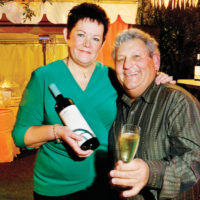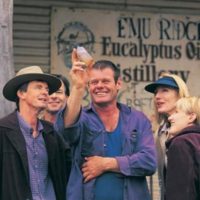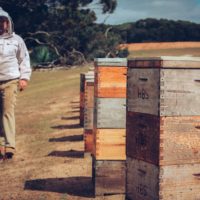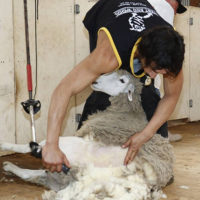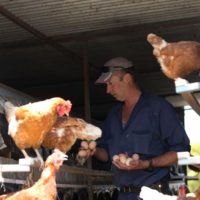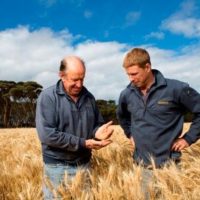"It’s a perfect climate for living, producing and growing. The environment hasn’t been changed and that gives us total involvement in the natural system. This is heaven on earth"
Kangaroo Island farmers have a unique connection to their natural environment. They balance the elements, sustainability and conservation with their passion to continue the heritage of family farming.
Vast vistas of protected wilderness stand side by side with wide fields of grain, flocks of sheep roaming the paddocks, cattle, poultry and small patches of vineyards. Dotted across the land are the Island’s ubiquitous beehives, home to the purest remaining strain of Ligurian honey bees in the world. This shared landscape reflects the Community’s primal connection with unspoilt nature and their desire to live as part of it
Sustainable Plenty
The mainstay of agriculture here is sheep, visible everywhere, with two-thirds of the Island farmers involved in wool production. There are over 500,000 sheep, bred for wool or tender lamb for the table. There is even a sheep dairy, making sheep milk yoghurt and cheese.
Across the Island, pastures and paddocks define the land, with over 23,000 hectares of land devoted to canola, wheat, cereal crops and pulses.
There are three large free-range eggs producers here, along with cattle, pigs and a smattering of other livestock. Add vineyards and vegetables to see a diverse and healthy agricultural industry thriving on Kangaroo Island.
The pure, pristine waters surrounding the Island draw commercial fishermen and enthusiastic amateurs. Delicious King George Whiting, crayfish, abalone, prawns and oysters are considered by some as the best in the world.
Ligurian bees were brought here in the early 1880’s and, in 1885, the Island was declared a bee sanctuary with no further imports allowed. Now home to the only remaining pure strain of Ligurian Bees in the world, Kangaroo Island honey is an icon of the Island’s food offering, with a distinctively complex flavour profile.
Innovative new products constantly emerge alongside traditional agricultural products, with a number of farmers delving into marron production. Kangaroo Island marron is now highly prized with both Island and mainland chefs shouting praise about its delicate taste. Others farmers have diversified their plantings, experimenting with crops such potatoes, lavender, olives and figs.




